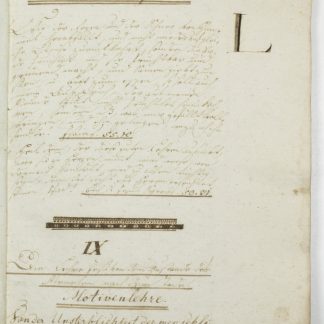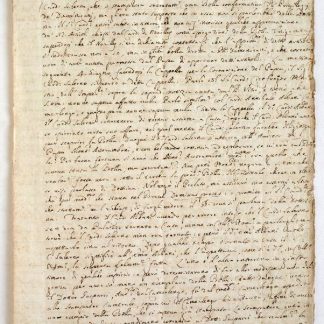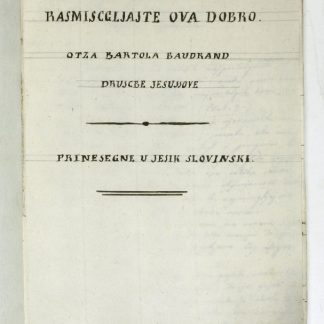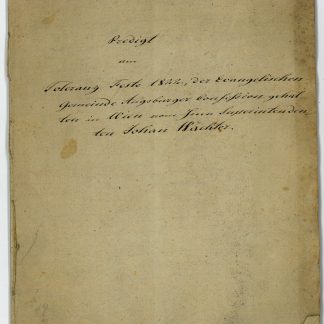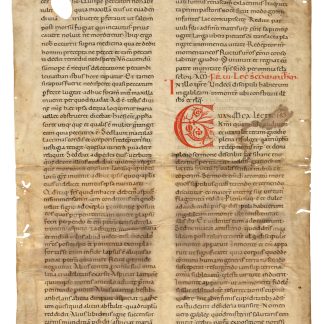Gregory I and The Venerable Bede, from a Carolingian Homilary
A large leaf from a Latin Homiliary.
2 pp. on one folio leaf, 300 x 404 mm. Latin manuscript on vellum, text on recto and verso. In iron-black Carolingian minuscule script, 2 columns of 50 lines, with incipit in rustic capitals and a rubric in uncials, decorated initial 'E' with reserved designs and foliate tendrils.
€ 4.500,00
A leaf from a Carolingian homiliary, and a very imposing and elegant example of 12th-century Italian script and decoration. The text for the Saturday before the third Sunday after the octave of Easter, comprising the end of Gregory the Great's Homiliae in Evangelia 2.25, followed by a rubric and the beginning of Bede's Homilia 2.3 ("Venit Maria Magdalene [...] secula seculorum. Amen. Feria VI. Lectio secundum Matthaeum. In illo tempore [...] [Matthew 28:16] Evanglica lectio fratres karissimi quam modo audivimus [...] Utraque autem interpretatio").
Beautifully decorated with a rubricated, foliated initial E, this leaf is not only an exemplar of Carolingian manuscript style and decoration, but also a fragmentary survival of homilies from two of the most beloved writers of the early medieval period. They are both saints: one a pope, Gregory I (540-604), who delivered his homilies initially as public speeches, and the other the most famous British author of the Dark Ages and arguably the most-read Englishman until Chaucer, The Venerable Bede (672/3-735). By the late Middle Ages their importance had waned in the light of new well-spoken popes and Doctors of the Church, but in the 12th century their homilies were among the most important produced, and were still being read and reread on feast days and holidays as some of the key Christian texts.
From the collection of James Stevens-Cox (1910-97), with his pencil number '14694'. Colker MS 491; acquired in 2000 from Maggs.
Recovered from use as a pastedown and adjacent flyleaf in a tanned leather binding, with consequent but light wear: upper and lower margins cropped, and some staining and marginal wormholing. The decoration however is unaffected, and remains bright and clean.



